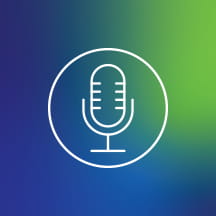It’s not often that David Higginson gets the opportunity to meet the patient families who benefit from his work. But when he does, it’s always special.
“As a computer guy who’s often stuck in the basement doing math, the chance to see how the algorithm we built improved a family’s quality of life—it’s the ultimate reward,” says Higginson, executive vice president and chief innovation officer at Phoenix Children’s.
The life-changing algorithm Higginson refers to is a machine learning project he developed to predict children coming into the hospital who may be at risk of malnutrition. To build the model, Higginson used more than 15 years of historical patient data on children who’d been diagnosed with malnutrition at Phoenix Children’s. To test it, he applied the algorithm to every new patient that came in for a week and found five who the model predicted had a high probability of undiagnosed malnutrition.
He reached out to a dietitian at the hospital and—without providing any context—asked them to check in on these five patients and conduct a nutrition consult. “They came back from seeing the patients and said, ‘Well, three of the five had undiagnosed malnutrition—how did you even know that?’ I knew then that there may be an opportunity here,” Higginson says.
From there, Higginson provided the dietitian a daily report of a few patients identified by the model and within a few weeks was predicting malnutrition at a nearly 80% clip—about one child per day that otherwise would not have received a malnutrition consult. The model’s predictions eventually proved so successful that nutrition consults are now ordered automatically through the hospital’s EMR based on its results.
Higginson and his team monitor the accuracy of the process to ensure it is at least as accurate as physician-ordered consults in detecting children with malnutrition. This ensures resources aren’t wasted and staff aren’t frustrated by false positives.
“It’s a great example of how machine learning can be safely injected into the medical process,” Higginson says. “And for the children and families whose lives have been affected by this, it’s game changing.”
More machine learning applications for children’s hospitals
Higginson and his team have also been busy working on other machine learning models, including one that can predict with 95% probability which patients will not show up for their clinic appointments, allowing providers to confidently double book those time slots. Of course, they still see the original patient if they arrive, but Higginson says the new process saves resources and shortens the wait list for patients to see a specialist.
Additionally, Phoenix Children’s uses algorithms to make predictions on topics ranging from which insurance claims are most likely to be denied to which employees are most likely to leave the organization. But Higginson is quick to point out that machine learning isn’t a cure-all.
“It’s probably only 20% of the time that we can even frame the question or the problem in such a way that a prediction may be helpful,” Higginson says. “Our mantra is that we can’t get enamored by an interesting science project—the very first thing we must nail down is how you would execute it. If you can’t operationalize it, it’s pointless.”
The potential of machine learning for children’s hospitals
Now that the malnutrition model has proved it can be operationalized, Higginson has grand plans to scale the project. He theorizes that if he can replicate the malnutrition algorithm across the 5,000 diseases that Phoenix Children’s treats, the resulting predictions can be used by care providers to better diagnose any possible underlying illness.
“Just imagine if, for every patient coming into the hospital, we could run their data through these 5,000 models and have a list of any potential diseases they may have,” Higginson says. “You can imagine how big that would be—it would be a real game-changer.”


